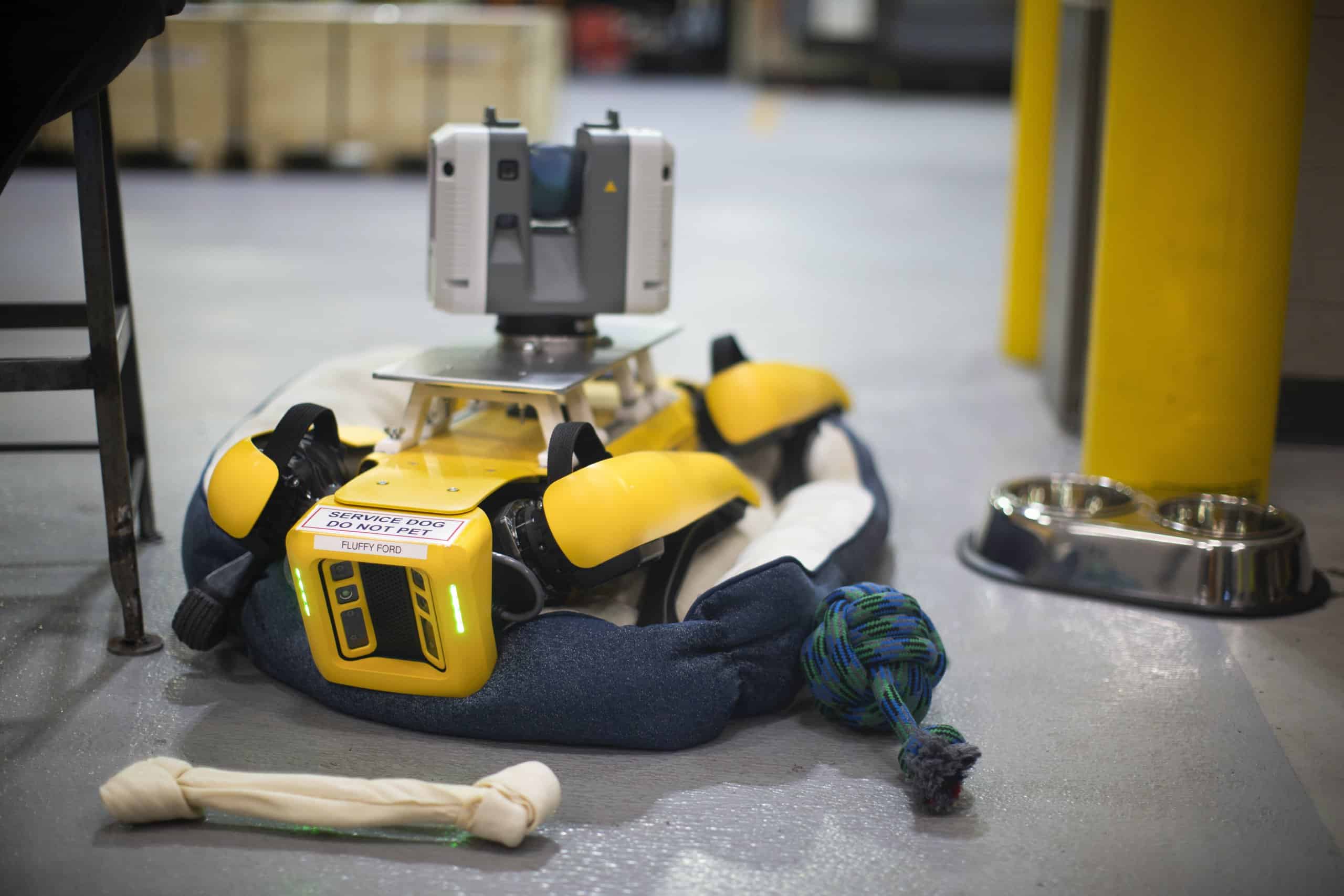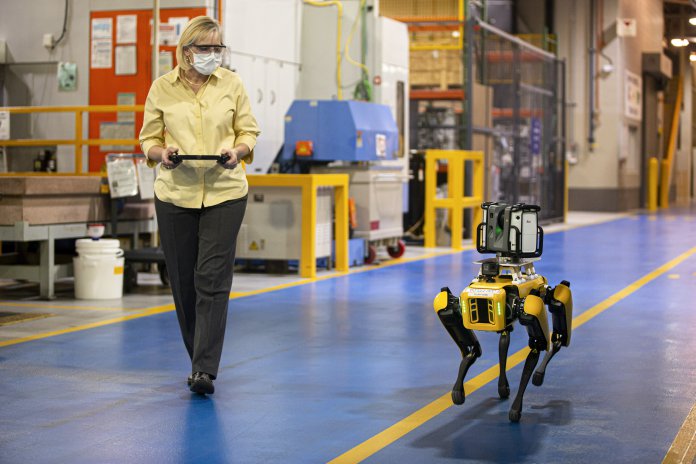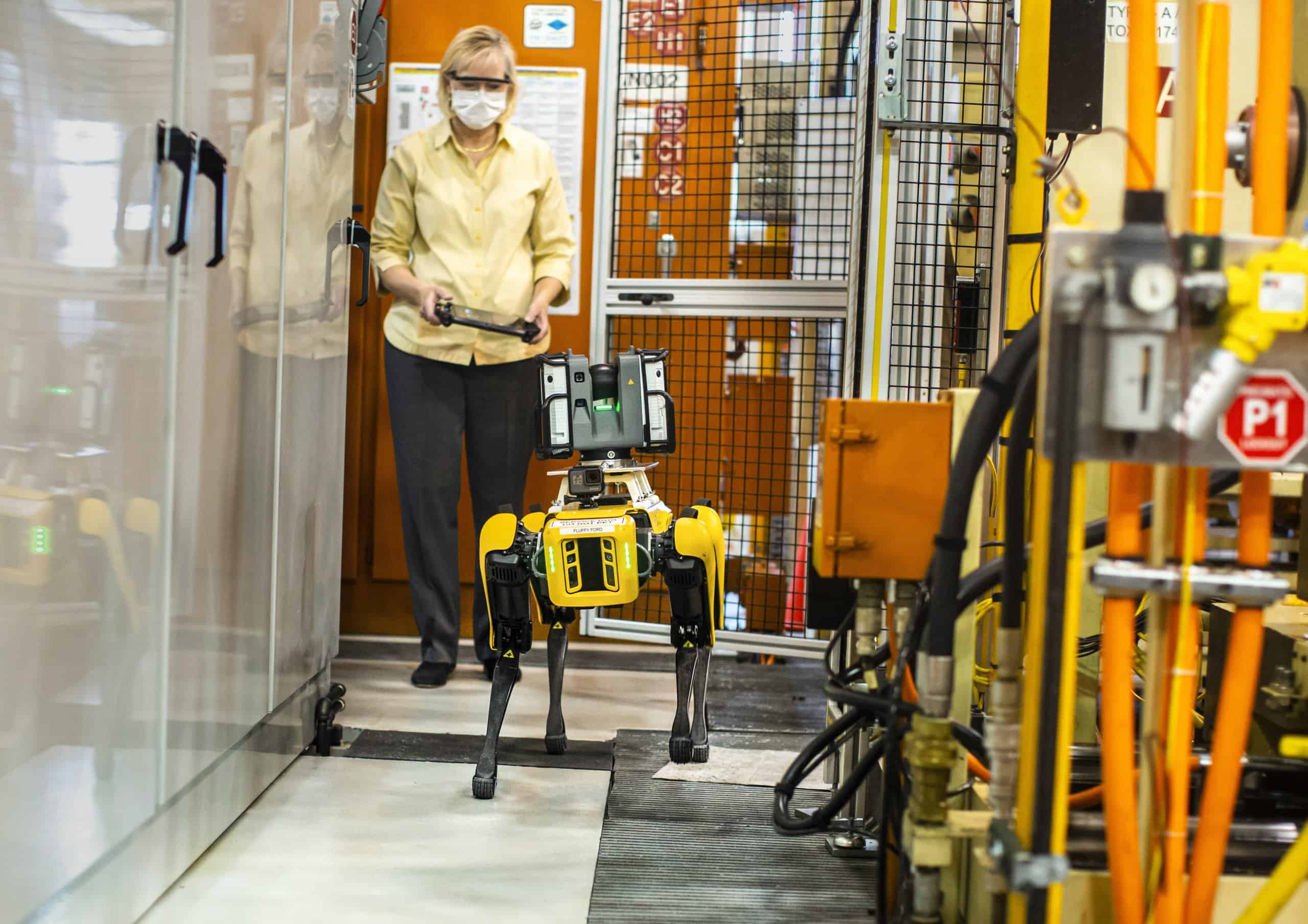Just like a real dog, Fluffy and Spot can sit, shake hands and roll over. But when scouting around in Ford’s Van Dyke Transmission Plant in Michigan, they also will be performing 360-degree camera scans, handling 30-degree grades and climbing stars for hours at a time in a pilot program designed to save time and money.
The 4-legged robots will being their work in early August, Ford said, helping engineers update the original computer-aided design for the factory retooling project.
“These robots can be deployed into tough-to-reach areas within the plant to scan the area with laser scanners and high-definition cameras, collecting data used to retool plants, saving Ford engineers time and money,” Ford said of the robots, each of which weighs 70 pounds and has been produced by Boston Dynamics.
“The robots, which Ford is piloting at its Van Dyke Transmission Plant, are bright yellow and easily recognizable,” the company said.
“Equipped with five cameras, the robots can travel up to 3 mph on a battery lasting nearly two hours and will be used to scan the plant floor and assist engineers in updating the original Computer Aided Design which is utilized when we’re getting ready to retool our plants.”
“We design and build the plant. After that, over the years, changes are made that rarely get documented,” explained Mark Goderis, Ford digital engineering manager. “By having the robots scan our facility, we can see what it actually looks like now and build a new engineering model. That digital model is then used when we need to retool the plant for new products.”
“Without Fluffy,” Ford added, “the update would be far more tedious.”

“We used to use a tripod, and we would walk around the facility stopping at different locations, each time standing around for five minutes waiting for the laser to scan,” Goderis said. “Scanning one plant could take two weeks. With Fluffy’s help, we are able to do it in half the time.”
The old way also was expensive – it cost nearly $300,000 to scan one facility. If this pilot works, Ford’s manufacturing team could scan all its plants for a fraction of the cost.
Goderis said the intent is to be able to operate the robots remotely, programming them for plant missions and receiving reports immediately from anywhere in the country.
“For now,” according to Ford’s news release, “the robots can be programmed to follow a specific path and can be operated from up to 50 meters away with the out-of-the-box tablet application.”

The key to Fluffy and Spot’s success is their agility, said “handler” Paula Wiebelhaus.
“The robots have three operational gaits – a walk for stable ground, an amble for uneven terrain and a special speed for stairs.” Ford reported.
“There are areas in the plant that you might not want to walk into because they might be tough to maneuver,” says Wiebelhaus. “It’s easier and safer to send Fluffy back there.”








I find that thing entirely terrifying. One day, its progeny will be hunting our progeny.